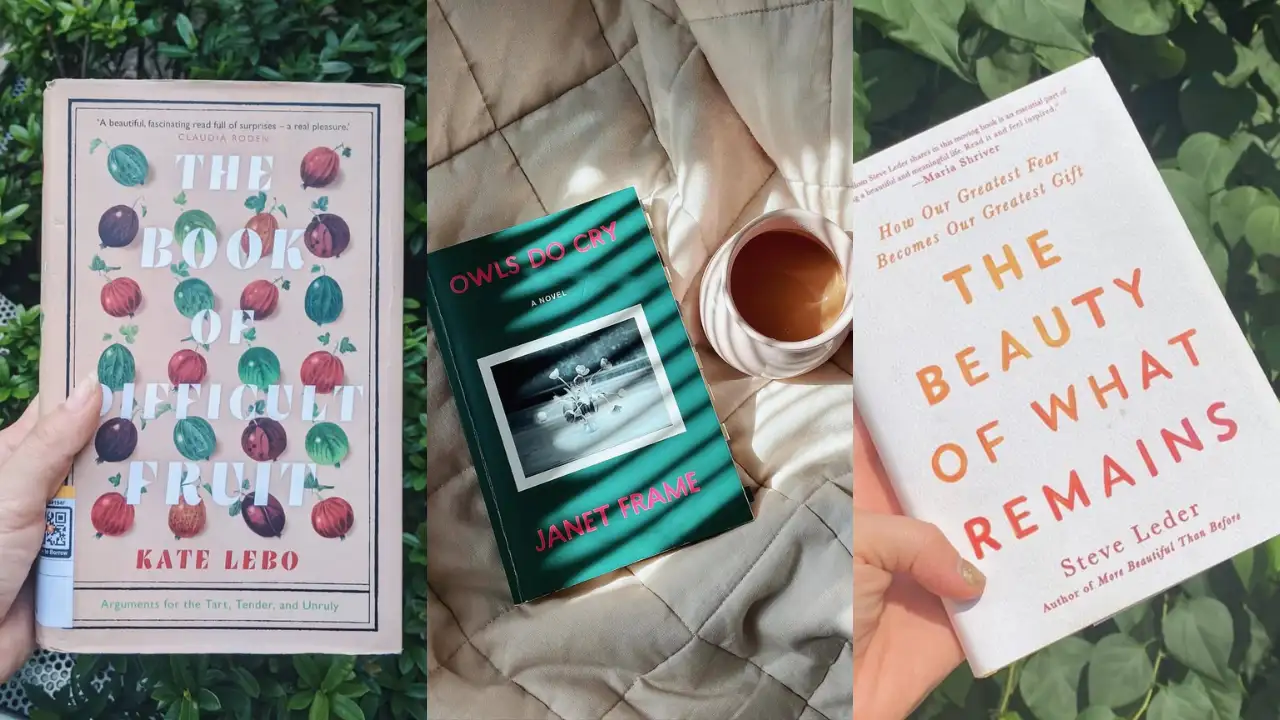Copyright timesnownews

We spend so much time looking for books that promise to fix us, transform us, rebuild us from scratch. But the most powerful books I've encountered did something entirely different. They didn't hand me a blueprint for a better life or a checklist for self-improvement. Instead, they sat beside me in the mess and helped me see my own thoughts more clearly. These ten books didn't try to change who I was. They simply offered language for feelings I couldn't name, patterns I couldn't see, and questions I didn't know how to ask. They turned confusion into clarity not through answers, but through recognition. Also Read: 10 Books That Slowly Changed My Mind Without Forcing It 1. Weathering: The Extraordinary Stress of Ordinary Life in an Unjust Society by Arline T. Geronimus A public health researcher explains how chronic stress from systemic racism and inequality literally ages bodies faster, leading to early disease and death in marginalised communities. Arline T. Geronimus introduces the weathering hypothesis, showing how discrimination, economic instability, and environmental racism create constant physiological stress that wears down the body over time. She presents decades of data proving that Black women in their twenties have health markers similar to white women in their forties, not because of genetics or personal choices but due to constant exposure to structural oppression. 2. On Connection by Kae Tempest A poet and performer explores what true human connection requires and why it feels so hard in a world shaped by capitalism, technology, and performance. Kae Tempest writes about how real connection demands presence, vulnerability, and a willingness to be changed by others instead of just seeking approval. They see listening as a radical act, not waiting for your turn to speak, but truly receiving what someone says and allowing it to move you. Tempest connects creativity and art-making to the desire for genuine connection, showing how sharing something true can bridge isolation. 3. The Beauty of What Remains by Steve Leder A rabbi reflects on decades of being with dying people and grieving families, sharing what he has learned about loss, meaning, and living with death’s certainty. Steve Leder writes about the lessons he has seen repeated at bedsides and funerals, what people regret, what they cherish, and how families heal or fall apart in grief. He weaves stories from his work with reflections on his father’s decline and death, showing that even deep experience cannot shield anyone from pain. Leder explores what remains after loss, not in a spiritual sense but in love, memory, and the ways relationships continue shaping us. 4. The Book of Difficult Fruit by Kate Lebo A food writer explores fourteen unusual fruits through essays that mix memoir, natural history, and reflection, using each fruit to explore illness, desire, and the body’s complexity. Kate Lebo writes about living with a rare salivary gland condition that makes eating painful, changing her relationship with food and with herself as a writer. She examines fruits like quince, medlar, and persimmon, those that need care and knowledge to be edible, and relates them to bodies that do not fit easily into categories. Lebo writes about disability as a constant negotiation with limits and the frustration of being misunderstood by medical systems. 5. Lightning Flowers: My Journey to Uncover the Cost of Saving a Life by Katherine E. Standefer A young woman learns that the defibrillator implanted in her chest contains minerals mined in conflict zones, pushing her to uncover the global costs behind her survival. Katherine E. Standefer writes about living with a genetic heart condition and the fear of relying on a device that could shock her heart at any time. Her search takes her to cobalt mines in the Democratic Republic of Congo, where she sees how suffering and exploitation feed the medical technologies that save lives. Standefer faces the painful truth that her health depends on systems causing harm elsewhere. 6. Notes on a Silencing by Lacy Crawford A writer revisits the sexual assault she experienced at an elite boarding school in the 1990s, exposing how the institution silenced her while protecting her attackers. Lacy Crawford describes being a scholarship student at St. Paul’s School, the assault by older athletes, and how the school blamed her instead of seeking justice. She recounts the long years of illness, guilt, and silence that followed, believing the school’s story that she was the problem. Decades later, she discovers proof that the school had medical evidence but hid it to protect its image. Crawford exposes how power and privilege work, how institutions rewrite truth to protect themselves. 7. Owls Do Cry by Janet Frame Four siblings grow up poor in New Zealand, their lives shaped by tragedy when the youngest sister dies in an accident at a town dump. The others, Francie, Toby, and Daphne, grow up carrying that loss and the weight of being outsiders. Janet Frame writes in poetic, fragmented language as Daphne slowly slips into mental illness and is sent to an institution. Having been institutionalised herself, Frame writes with rare insight into what madness feels like from within, terrifying, isolating, yet sometimes the only response to an unbearable world. She refuses to reduce Daphne to a diagnosis, showing her thoughts as valid even when they differ from what others see as reality. 8. The Still Point of the Turning World by Emily Rapp Black A mother writes about her son Ronan, who was born with Tay-Sachs disease, a condition that will take his life before he turns three. Emily Rapp Black describes how every milestone becomes both joy and heartbreak, knowing he will only lose abilities instead of gaining new ones. She refuses comforting narratives about her child’s suffering having meaning or being a gift. Instead, she tells the truth about love in the face of inevitable loss. Rapp Black connects with other mothers of terminally ill children, calling them dragon mothers, fierce, honest, and unwilling to sugarcoat their pain. 9. The Deepest Well by Nadine Burke Harris A paediatrician explains how childhood trauma and difficult experiences create toxic stress that changes brain and body development, leading to lifelong health effects. Nadine Burke Harris shares how she discovered that many of her patients’ chronic problems, from asthma to behavioural issues, were linked to abuse, neglect, or violence at home and in their communities. She introduces the ACE (Adverse Childhood Experiences) study, showing how trauma stacks up, each new hardship multiplying the risk for disease, addiction, and early death. Burke Harris shows that survivors’ struggles are not weakness or lack of willpower but biological responses to real danger. 10. Want by Lynn Steger Strong A woman in her late thirties teaches part-time, struggles with debt, and compares her life to her best friend’s stability, feeling she has failed despite doing everything right. She has a PhD, a husband, and two daughters, yet no financial security. Lynn Steger Strong captures the exhaustion of constant worry, always counting money, pretending success, and feeling ashamed of scarcity in a world that blames the poor. The narrator envies her friend’s comfort but also sees how class and privilege have shaped their very different lives. Strong writes about wanting more, stability, meaning, peace, and how that wanting can make you feel ungrateful even when you know your struggle is real. Also Read: 10 Books That Understood Me Before I Understood Myself These books didn't fix me because I was never broken. They clarified me because I was simply unclear. There's a profound difference between transformation and understanding, between being rebuilt and being revealed. The best books don't impose their wisdom like a weight on your shoulders. They hold up a mirror and whisper, "You already knew this, didn't you?" If you're tired of self-help books that treat you like a problem to solve, seek out stories and ideas that treat you like a person to understand. Clarity isn't about becoming someone new. It's about finally seeing who you've been all along.



